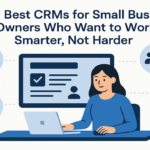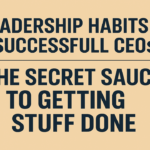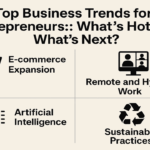Social entrepreneurship is all about recognizing the social problems and achieving a social change by employing entrepreneurial principles, processes and operations.
Social entrepreneurship
It enlists the help of businesses to develop innovative concepts that have a large-scale social and environmental impact.
Social entrepreneurship – definition and examples
It combines a social mission’s enthusiasm with a business-like image of discipline, inventiveness, and determination. Many social entrepreneurs start whole new businesses, employing creative and often risky methods to develop scalable solutions, which may include developing new products and services. Others join pre-existing social companies that are connected with their passions and interests. SEKEM, Fifteen, Belu, TranSanta, and Cracked It are some of the renowned examples of successful social entrepreneurship.
Types of social entrepreneurship
Entrepreneurs form long-term organizations, which can be nonprofit or for-profit, to bring about large-scale, long-term, and systematic change through new initiatives.
1. The nonprofit social entrepreneur
Nonprofits that rely on earned money to fund their operations generate revenue from their activities. While these organizations may obtain additional financing from grants and contributions, they are less reliant on these sources.
2. For-profit social entrepreneurship
A social and/or environmental objective is built into the business strategy of for-profit enterprises. These businesses use a double (financial and social) or triple (financial, social, and environmental) bottom line to assess their performance. Some companies go so far as to include these aims into their legal structures, such as the B Corporation.
3. The social entrepreneur who changes the world
The focus here shifts to the construction of an enterprise capable of meeting social requirements that aren’t being supplied effectively by governments and other corporations. These firms can sometimes become institutions, and the social entrepreneur who is involved must have the abilities and experience to manage a huge crew.
Being a transformative social entrepreneur has the benefit of making it easier to find exceptional volunteers. One important downside is that complying with an ever-increasing network of interconnected rules, regulations, and politics can be quite difficult.
You can’t deny that the discipline of social entrepreneurship has taken root in our culture if you ask any young person today who is enthusiastic about social change. However, there is one element missing from the global discussion about what it means to be a social entrepreneur: moral leadership.
What are the characteristics of successful social entrepreneurs?
With so many graduate programs available, it’s tempting to assume that learning the business essentials, such as marketing, business model design, finance, branding, and more, is the key to becoming a social entrepreneur.
These talents, however, do not portray the entire picture of the hard-edged skills we’ve seen among Acumen’s investors, Fellows, and course takers.
Most early-stage businesses are more concerned with flashy websites and Kickstarter videos than with these techniques. Moral leadership manifests itself in the form of daring talks in meetings with coworkers. They are well-considered recommendations made to board members to help them make difficult decisions and take the following steps. Deeply considered, well-researched ideas that have been pressure-tested and shared with trusted colleagues are evidence of the techniques.
The rise of social entrepreneurship
Those who recognized that traditional capitalism was failing our most vulnerable citizens and concluded that inequity and injustice could no longer be overlooked gave birth to social entrepreneurship. ‘What is possible when we place people and the earth at the forefront of our decision-making?’ they boldly asked.
The enthusiasm for social entrepreneurship’s necessity and growth is palpable.
The lack of humanity in traditional capitalism is not only a social failing but also an economic failure. In an interview with IKEA Foundation’s “Ask an Expert,” Acumen’s founder and CEO Jacqueline Novogratz point out that 1.5 billion people –– 22 percent of the global population at the time –– did not have access to electricity in 2007, 150 years after Thomas Edison introduced the lightbulb.
Traditional markets saw no motivation to invest in rural, low-income communities that lacked infrastructure. And, rather than meeting the pull of consumer demand, which scales considerably more effectively, well-intentioned organizations often focus on offering assistance where they see a need.
Social entrepreneurship lies in the middle of these two worlds, drawing on lessons acquired in each to reinvent what it takes to make a concrete, long-term difference.
D.Light is an example of a social venture that used patient capital to provide energy to over 100 million people who were previously off the grid. D.Light manufactures low-cost solar lights and solar energy systems that generate electricity while also creating thousands of new employment and reducing reliance on kerosene.
7 steps to becoming a successful social entrepreneur
Being a social entrepreneur is all about making a difference, and following these steps can help you succeed.
Social entrepreneurs are the kind of people with huge hearts. They are passionately concerned about more than just making a profit. They’re also driven by a desire to make a difference.
For some, like Yoobi’s Ido Leffler and TOMS’ Blake Mycoskie, this means donating a product to someone in need for every product purchased. Others, like Scholly co-founder Christopher Gray, see it as assisting low-income students in obtaining the scholarship funds they require to pursue their college aspirations.
You need more than a brilliant purpose-driven company idea to flourish as a social entrepreneur, as these remarkable change-makers have. According to C.J. Hayden, a San Francisco-based social entrepreneurship coach and founding board member of the San Francisco Bay Area Chapter of the Social Enterprise Alliance, “you need a step-by-step plan and the resolve to see it through.”
Hayden recommends carefully following these seven practical, tangible steps to become a successful social entrepreneur — and to actually embody the change you wish to see in the world.
1. Write a mission statement
“Begin by identifying who you want to serve, where you want to serve them, and how you want to serve them. Be as specific about the problem you’d like your business service or product to solve for this group.
Consider your natural abilities, core competencies, professional skills and training, and resources available to you. ‘What will I do?’ are basic guiding questions to ask oneself. ‘How am I going to accomplish it?’ ‘Who am I doing it for?’ and ‘What value will I provide?’ are two questions to consider. Your mission statement will be informed by the responses to those questions.”
2. Research the field
“Find out more about the social business landscape you want to work in, who the players are, and how they’re changing the world.” Avoid reinventing the wheel. If a entrepreneur is currently doing something similar to what you want to accomplish, utilize their example as inspiration and fuel to create your own unique purpose-driven offering.
When it comes to locating potential competitors or colleagues, Google is your best friend. Also, what would you search for on the internet if you wanted to engage with a business providing that you want to offer? What keyword search terms would he or she employ specifically? Consider yourself as your ideal customer or beneficiary, and conduct an online search.
You should also look at trade associations dedicated to social business. The Social Enterprise Alliance, which has 16 chapters across the United States, is a terrific place to start. Find out who this group’s members are and what kinds of social enterprises they do.
Further refining your focus, look into trade organizations that cater to your specific possible offering. You should contact the National Office Products Alliance, for example, if you want to contribute office products under the popular one-for-one contribution model. Look at what they’re teaching their members and the issues they’re discussing at meetings and conferences. This will assist you in getting the pulse of what’s going on in the field you hope to enter.”
3. Conceptualize your unique offering
“How can you differentiate yourself from what others are already providing?” The more grounding and granularity you have in what you want to achieve and how you’ll do it — ideally in new ways — the more unique your social company will be.
Grab a pad of Post-It notes and write down a word that is directly relevant to what you’re attempting to accomplish with your social company on each note. Then tape the notes to walls or windows where they will be visible and move them around in various combinations.
Continue to change your sticky notes over the course of several days or weeks, keeping in mind what you want to achieve and who you want to serve, as well as how you can do all of this uniquely, as only you can within your particular social niche.
Alternatively, if you can’t be completely unique in the field you’re entering, consider how you may bring value to their efforts, perhaps collectively.”
4. Reach out to team members for feedback and support
A team member doesn’t always mean someone who will work alongside and for you, whether as a business partner or an employee. Rather, it’s someone who will be a staunch supporter of what you’re attempting to achieve with your mission-driven business. Someone who is rooting for you and is on your team.
Look for outside help from people you already know and trust as mentors and advisors in your life and career. They could also be rivals and colleagues you encountered while investigating the field, or members of relevant trade organizations you investigated. They could simply be like-minded people who wish to make a difference, or they could already be doing so.
Team members are people with whom you may freely exchange ideas and seek criticism and guidance. People who have been in your shoes before and can guide you to success, ideally by opening up their networks and resource pools to support you along the road.
Simply present your mission statement to your supporters and mentors and ask them what they think. When doing this, you’ll need a thick skin because some people may be harsh in their judgment. Keep in mind that your teammates are most likely well-intentioned and want to see you succeed.”
5. Develop your business model
“A business model is a blueprint for how your company will create money.” Consider how far you’d like your services and/or products to go. Will you be content to serve and support only the number of consumers that you can personally serve locally as a single person? Or will you need to grow and hire in order to have a greater impact?
Decide and document how much money you want or need to bring in for this social venture to support your cause, pay for itself, pay you and anyone else you could hire, and possibly expand. What form of business strategy can provide you with the income you require and desire?
Also, consider whether the people who will benefit from your company’s aims will pay for it themselves, or if you’ll have one group of people pay for your products and another group of people benefit. For example, TOMS Shoes’ one-for-one approach sees one set of people – customers — pay for the shoes while persons in need benefit, which is a common social business model.
Microlending operations are an example of a social enterprise where the beneficiaries pay for the products or services directly. Making microfinance loans to people who pay interest is an increasingly prevalent business model structure. The interest received from them is used to pay back the loans, generate profits, and provide money for future loans.
Consider entering your selected model in a local social entrepreneurship pitch competition, with the purpose of refining it as much as possible, once you’ve decided which form of social enterprise business model best matches your business concept – and there are plenty to pick from.”
6. Identify initial funding sources
“This is where you’ll want to perform your research to figure out where you’ll get your startup money.” What will you need to receive the financing you need to launch, and where will you get it?
Will you take out a standard company loan or can you self-fund? Will you seek financing from friends and family or from angel investors and venture capitalists?
Consider using Indiegogo to fundraise for your social venture.
If you already have some early success as a fledgling social venture and have a significant mailing list or e-newsletter subscriber base to which you can promote your crowdfunding campaigns, crowdfunding is a smart choice. If you don’t have a large target market or a large social following, crowdfunding may only bring in a little amount of money and isn’t worth your time.
Impact investment groups, which only support companies with a social mission, are one of the greatest funding possibilities for social enterprises. The aforementioned Social Venture Network is an excellent way to meet investors that are interested in this rapidly increasing sector.
7. Make an action plan and stick to it
“An action plan — not to be mistaken with a business plan — lays out the to-do tasks and action items you need to commit to, as well as when you need to commit to them. It will include the precise date you want to launch your social endeavor, as well as the time it will take you to get there, working backward from that date.
Your action plan is your master to-do list, schedule, and calendar all rolled into one. It should be tailored to your annual, monthly, weekly, daily, and even hourly business objectives.
When you’re starting off and don’t have anyone to hold you accountable, painstakingly establishing an action plan — and sticking to it — is critical to remaining on track. When you do, you can transform your dreams of changing the world into reality.”
Social entrepreneurship examples
Some businesses are founded for and dedicated to contributing to social good, and we’ll discuss some of them below.
1. TranSanta
TranSanta is a one-of-a-kind community-driven social entrepreneurial endeavour. It maintains an Instagram account dedicated to telling the tales of transgender youth in need. These people create Target wish lists of products they require, and members of the community can anonymously purchase and deliver them the items they require.
2. Books to Prisoners
Books to Prisoners is a typical non-profit organisation based in Seattle, Washington, that strives to break the jail recidivism cycle. They receive book donations from members of the community and established bookstores, which are subsequently repackaged and distributed to people who are incarcerated. Donations in cash are used to cover operational expenditures such as hiring office space and purchasing mailing supplies.
3. Cracked It
This company is a smartphone repair service in London that employs ‘at risk’ and formerly jailed young people. They educate life skills and provide work and income options to individuals of the community who are often despised and disregarded by society.
4. 734 Coffee
734 Coffee is a humanitarian enterprise that helps Sudanese refugees. The company grows and harvests coffee with local Gambella co-op farms, distributes to American stores, and donates a percentage of proceeds to Sudanese refugee scholarships.
5. SOIL
SOIL (Sustainable, Organic, Integrated Livelihoods) is a non-profit research and development group dedicated to implementing long-term, low-cost sanitation solutions in Haiti. They employ locals, and 92 percent of all donations go toward supporting and implementing their environmental activities.
6. TOMS
TOMS is widely credited with putting social enterprise on the map. It all started with a one-for-one model: buy a pair of TOMS shoes, and TOMS will donate another pair to a child in need. Today, purchasing a pair of TOMS shoes or sunglasses helps people all over the world with shoes, sight, water, safe birth, and bullying prevention services.
7. Warby Parker
Through its “Buy a Pair, Give a Pair” campaign, this eyeglasses manufacturer distributed nearly 5 million pairs of glasses to individuals in need in 2019. They’ve also shattered the eyeglasses industry and created a slew of imitators.
8. Ben & Jerry’s
Ben & Jerry’s, a company most known for its ice cream, is also committed to using its revenues to help others. “To create interconnected prosperity for everyone who is connected to our business: suppliers, employees, farmers, franchises, customers, and neighbours alike,” they say, and they’ve made a strong commitment to the cause.
To mention a few areas where the company supports good change, they include ecologically sustainable agricultural and manufacturing practises, racial justice, and LGBTQ+ problems, to name a few. Their ice cream, for example, is substantially more expensive than other brands, but they do so in order to pay their employees a livable salary of $18.13 per hour.
What differentiates social entrepreneurship from traditional business
In the realm of business, entities that prioritize both social impact and financial viability are known as social enterprises.
In an ideal scenario, there would be no need to distinguish between businesses solely focused on profit and those dedicated to social good. However, understanding the unique characteristics of social entrepreneurship is crucial in the current landscape.
When defining a social enterprise, common questions arise:
- Is it merely a nonprofit with commercial operations?
- Does it adhere to a triple-bottom-line approach?
- Can businesses focused on environmental conservation be considered social enterprises?
- Is profitability a requisite for social entrepreneurship?
- Must a social enterprise be structured as a nonprofit?
First and foremost, the organizational structure does not dictate what qualifies as a social enterprise. It can function as a nonprofit, for-profit, or a blend of both.
The fundamental disparity between a social enterprise and a conventional business lies in the prioritization of social impact by social innovators.
Furthermore, the source of funding is inconsequential in defining social entrepreneurship. Gregory Dees, a leading figure in the field, emphasizes that entrepreneurship fundamentally revolves around creating value through innovative methods.
Highlighting that social entrepreneurship is primarily about effecting social or environmental change is crucial. However, it’s worth questioning whether businesses that alleviate their impact-driven initiatives but continue operations still qualify as social enterprises.
For instance, while Warby Parker has commendably made eyeglasses more affordable and donated millions of pairs through its buy one, give one model, its core business wouldn’t fundamentally change without these initiatives.
Beyond the commercial aspect, social entrepreneurship encompasses forging novel connections among people, as noted by David Bornstein. Hence, ethical leadership practices such as courage, amplifying marginalized voices, and navigating conflicting interests are integral for sustainable, impactful change.
How to shift the status quo with social entrepreneurship
When social entrepreneurs find the sweet spot of providing value to their target audience, packaging it attractively, and creating a virtuous cycle of success, magic happens. Each step toward a better system propels the revenue model forward.
Seasoned social entrepreneurs share a crucial insight: fall in love with the problem, not just your idea. Daniela F. Gheorghe, SME Finance Lead at African Management Institute, advises, “Remember to fall in love with your goal and why you’re there, not just your idea.” Ashish Shrivastava emphasizes connecting deeply with the problem, believing that personal experience is essential for authentic solutions.
Avoid the mistake of creating unneeded or harmful solutions by understanding the problem and its context. Programa Valentina exemplifies this. Initially an all-girls coding school, it evolved into a six-week boot camp on technical and soft skills in Guatemala, addressing the high youth unemployment rate.
Jessica Hammer, co-founder and CEO, warns against seeking solutions without understanding the problem. “Social entrepreneurs often start with a concept and then try to adapt it to a community,” she notes. “But it’s crucial to fully understand the problem.”
Programa Valentina’s team refocused on their mission of tackling unemployment when they noticed a gap between graduates’ skills and employer demands. They discovered that young people prioritized good careers over coding jobs. By aligning their curriculum with employer needs, Programa Valentina better equipped graduates for meaningful employment.












